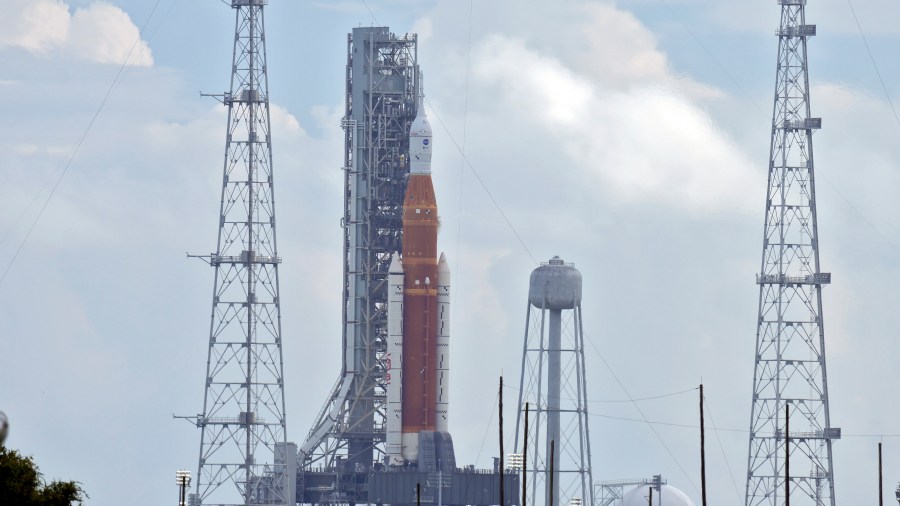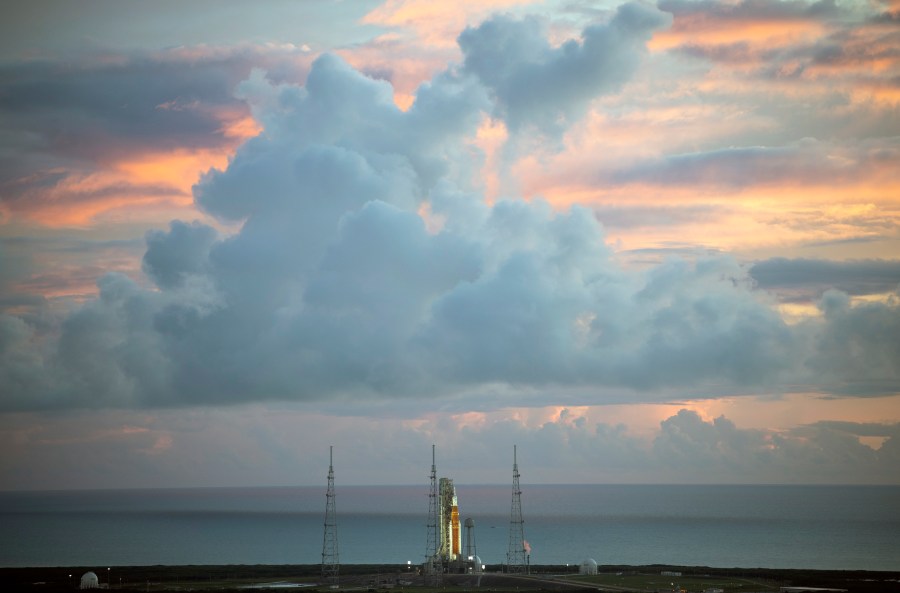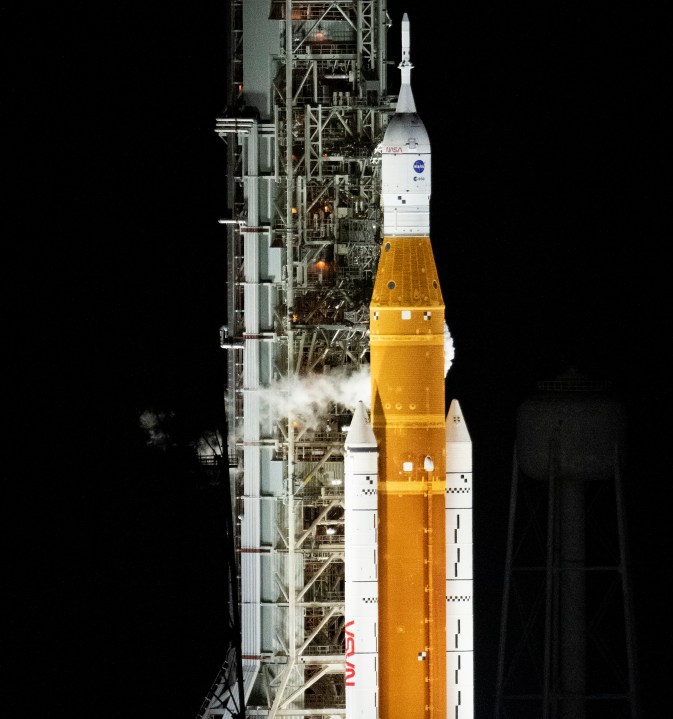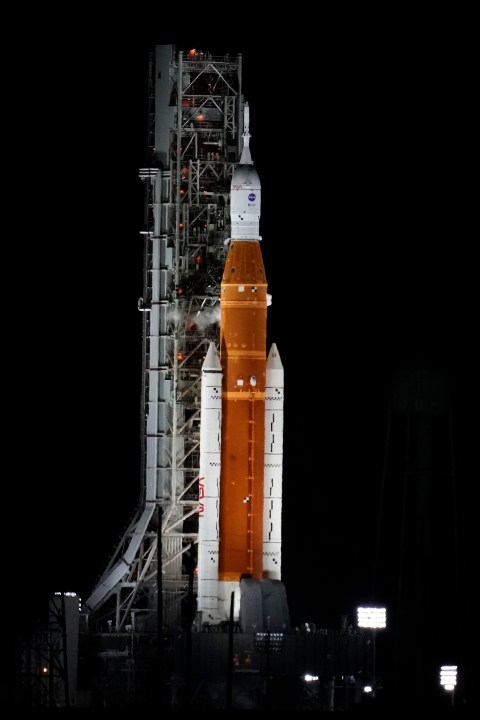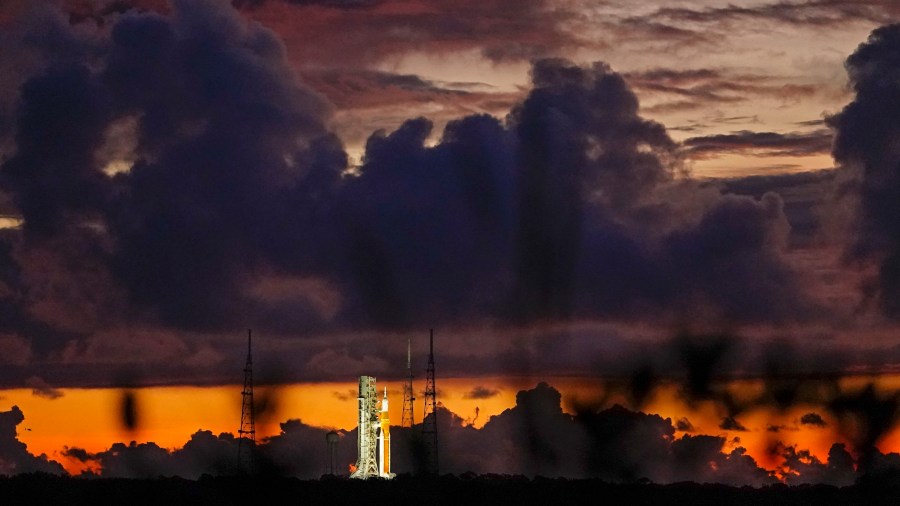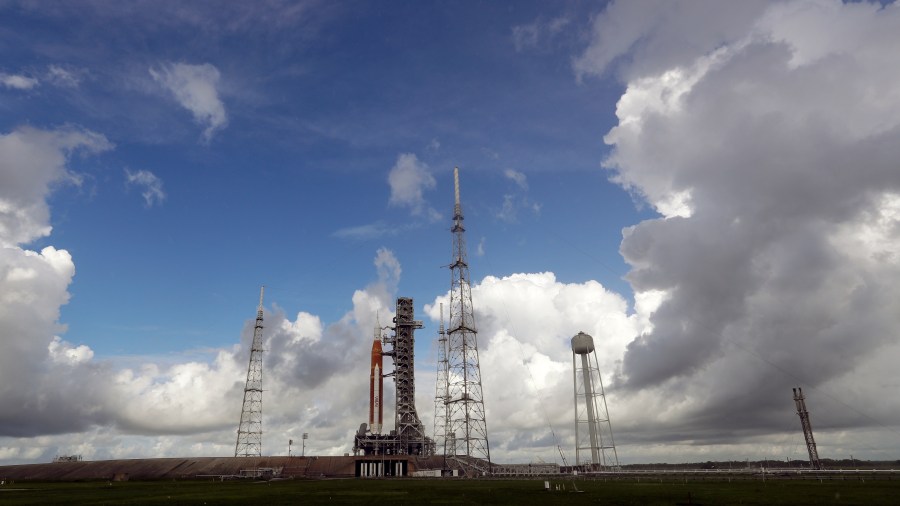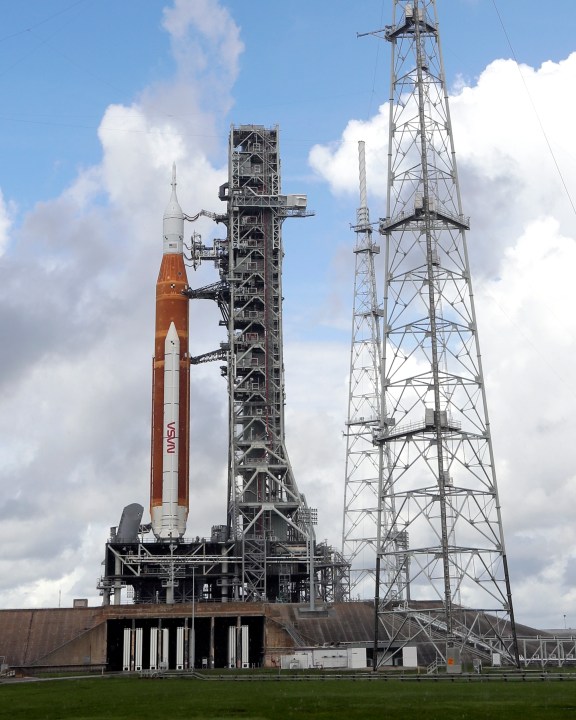NASA postpones Artemis 1 launch
(NewsNation) — NASA’s launch of its new moon rocket, Artemis 1, was scrubbed Monday morning after the launch team discovered an engine bleed in one of the four engines.
“The launch of #Artemis I is no longer happening today as teams work through an issue with an engine bleed. Teams will continue to gather data, and we will keep you posted on the timing of the next launch attempt,” NASA announced in a tweet.
The countdown clock stopped at T-40 minutes around 7:30 a.m. local time. Dr. Ken Kremer, a research scientist and expert on all things space, told NewsNation that there were a lot of issues at that time, explaining that engine #3 wasn’t where it needed to be.
“There is no guarantee that we are going to launch today,” he said. “The main issue right now is conditioning the engines: they have to be the proper temperature and the proper pressure.”
“They have solved several problems along the way and they got to one that needed time to be solved,” Bill Nelson, NASA’s administrator added.
NASA tweeted the delay, saying, “The hydrogen team of the @NASA_SLS rocket is discussing plans with the #Artemis I launch director.”
“If they come up with a solution, they will resume the count. If not, they will scrub for the day,” Kremer said.
Delays do happen, and that is why there is a window for the launch time.
“There’s also a crack, potentially, on a flange on the core stage. It’s right out there, which is the first stage of the rocket, and that seems to not be a problem. But the engines are still a problem. Earlier, we had problems with thunder, lightning, that delayed the tanking the fueling of these cryogenic propellants, we lost about an hour for that,” Kremer explained.
He said the launch has to be nearly perfect, or else it could jeopardize NASA’s mission.
“We want to keep it on the ground if there’s any concern whatsoever because a failure would put the whole Artemis program in jeopardy,” Kremer explained.
Kremer said that the launch wouldn’t be able to happen past 10:33 a.m. due to physics.
“It’s absolutely specific. It depends on orbital mechanics physics, the way the Earth and the moon line up. And so we have two hours today.”
Kremer continued to explain, “So we have to have the Earth and the moon line up. And another issue is we can’t have the Orion capsule go into an eclipse for too long, because it depends on solar power. So if it goes into eclipse where it doesn’t get any sun, and we can’t recharge those batteries, the Orion would die.”
Kremer said that NASA would have only two other dates to complete the launch: almost two hours on Sept. 2 and only one hour on Sept. 5.
“Whether it launches today, three days from now, a week from now, doesn’t matter. What really matters is that it’s successful. This mission must be successful. It cannot fail,” Kremer said.
NASA worked to prepare the rocket for launch Monday morning in an effort to send humans back to the moon for the first time in 50 years. However, the new moon rocket countdown was interrupted early in the morning by a fuel leak, reappearing in the same place engineers saw one during the dress rehearsal back in the spring.
The leak was confirmed when launch controllers slowly resumed fueling and saw it was a hydrogen leak, not faulty sensors.
Five strikes were confirmed, hitting the 600-foot lightning-protection towers surrounding the rocket at NASA’s Kennedy Space Center. The strikes weren’t strong enough to warrant major retesting.
Officials said Sunday that neither the rocket nor capsule suffered any damage during Saturday’s thunderstorm; ground equipment also was unaffected.
“Clearly, the system worked as designed,” said Jeff Spaulding, NASA’s senior test director.
The Artemis 1, a 322-foot rocket and the most powerful rocket ever built by NASA, will attempt to send an empty crew capsule into a far-flung orbit.
NASA officials said Saturday that the team felt good about embarking on the historic attempt.
Artemis 1 mission manager Mike Sarafin acknowledged at a news conference that the rocket could lift off within its two-hour launch window, which began at 8:33 a.m. EDT, or there could be technical or other issues that prevent it from getting off the ground.
However, after polling the mission management team Saturday, Sarafin said, “We do feel good about our attempt on Monday in terms of our overall setup.”
“We’re ready to proceed,” he said.
“So, I’m looking over at the rocket occasionally because it just inspires me that we’re gonna watch that,” NASA senior project engineer Darlene Pakora said.
“As important as this mission is — the data we get off of it, the performance we get out of it feeds into the next one and the next one — so it, you know, it’s a building block along the way,” NASA Orion engineer Stu McClung said.
Once in space, the Orion spacecraft will orbit the moon, traveling approximately 1.3 million miles over six weeks back to Earth.
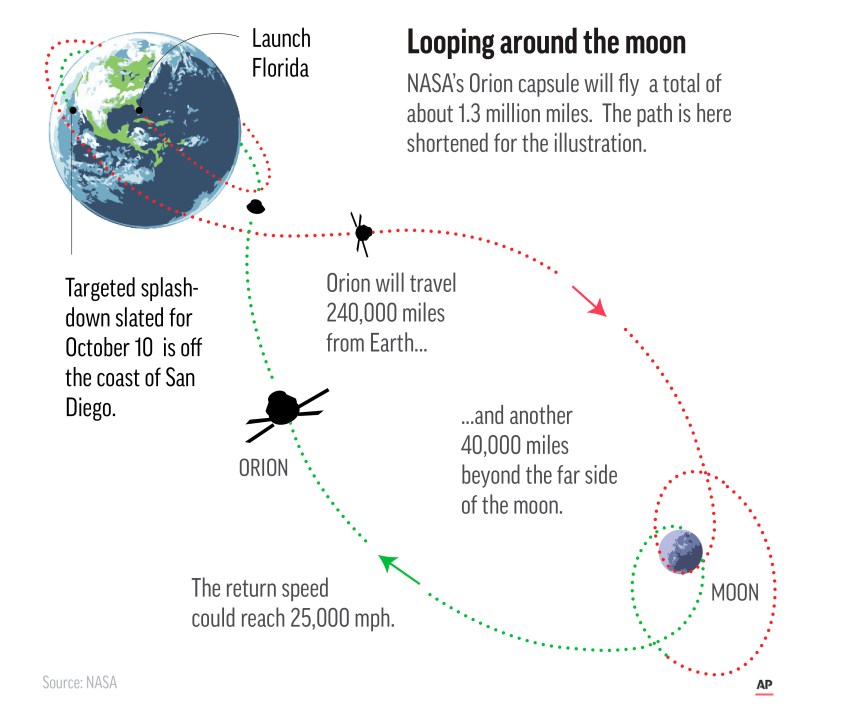
This 42-day, unmanned mission is one of three. It’s setting the stage for NASA and humans to once again explore the moon and beyond with an added goal of eventually sending humans to Mars.
If all goes well, astronauts could be landing on the moon again as soon as 2025. And instead of spending just a few days on the surface, astronauts could stay on the moon for weeks, even months.
Along with lunar missions, NASA is also looking to make history by landing the first woman and first person of color on the moon.
“It’s a stepping stone to the future,” Pakora said. “And hopefully we’re going to mine things that are going to let us build on the moon so that we can use that as a base or mind things to take to a base in space that you know whatever the plans are in the future. To go out farther and explore. I think we’re a people who want to learn things and we get better by learning, and we make, and we learn things out there that help us back here.”
If Monday’s launch can’t go forward, the next launch attempt wouldn’t be until Friday at the earliest.
The Associated Press contributed to this report.






